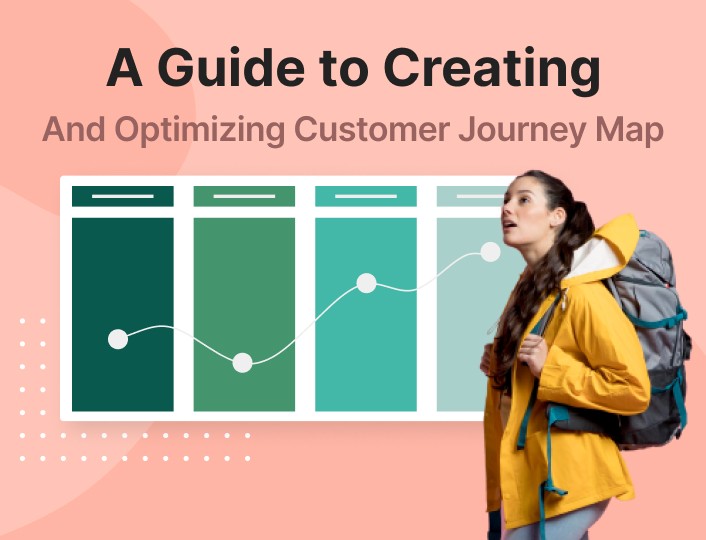As a savvy marketer, understanding how your customers transition through their buying journey is important for succeeding in business. This is why having an optimized Customer Journey Map (CJM) in your marketing arsenal is of great essence.
But do you even know what a CJM is all about? Ever used one before?
Well, not to worry; these questions – and many more – will be answered in this guide.
And if you have already created one, this guide will show you how to optimize it.
So, here are the points that we shall be discussing:
- Understanding the customer journey map
- Why do you need a customer journey map
- How to create a customer joueney map
- Best practices for creating a customer journey map
- Customer journey mapping tools with templates
Understanding the Customer Journey Map
Converting a potential customer into a paying client involves building enough trust from the moment they hear about your brand, up to the moment they make a purchase on your website.
But how is it possible to keep track of a customer’s interactions with your brand every step of the way? A customer journey map is your answer.
What is a customer journey map? Think of it as a map that leads you through unfamiliar terrain.
A customer journey map, also called a buyer journey is a chart that shows the steps your customers have to go through as they engage with your brand.
It helps you answer these questions:
- Where do customers start their journey with your brand?
- What do they feel about your company’s service and your brand as a whole?
- Which of their actions impact your business directly?
Here’s what a basic customer journey map looks like:
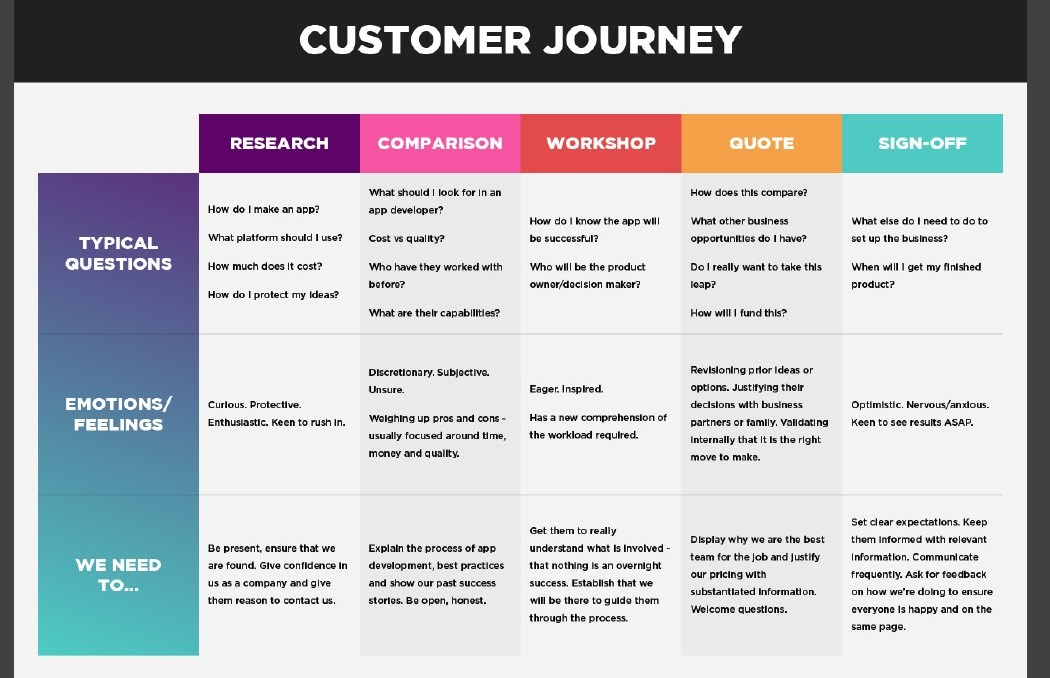

Originally designed by DapperApps
Recognizing your customers’ pain points provides you with a chance to fix these frustrations, thereby improving the customer experience in your company.
Although you might have access to tools that track your customers’ interactions and transactions, this data isn’t enough to point out your customer’s frustrations or tell the whole story of what they experience with your company from start to finish.
This is why profiling your customers using a buyer persona is important. Buyer personas makes it possible for you and your team to have an in-depth understanding of your customer’s buying experience.
Let me make an illustration at this point.
Have a look at this customer journey map by Lucidchart. It is based on a buyer persona, “Sarah”. Notice how easy it is to understand?


Let me explain this chart a little:
Each step of this customer journey map consists of a sequence of actions carried out by Sarah: decide, travel, experience, return. These steps are then further broken down into smaller actions Sarah would perform throughout her buying journey.
Each of these interactions is referred to as touchpoints. Touchpoints are points of contact or interactions your customer has with your brand while trying to achieve a goal.
One of the actions listed under Sarah’s decision process is when she buys a ticket online using her phone. In this case, the brand’s touchpoint she comes in contact with would be a website or mobile app. Her experience at every touchpoint will help her form an impression of the brand, whether good or bad.
Thus, every touchpoint is an opportunity for the brand to improve its customer experience. So, the brand will probably be asking the questions: How responsive is our website on mobile devices? How long does it take to complete the checkout process? Do we need to optimize the checkout process? etc. Getting the point?
An in-depth view of these seemingly minor details will not only allow you to understand your customers but also influence each little step, thereby leading to an optimized and seamless conversion process.
Why Do You Need A Customer Journey Map?
What better way is there to improve your business than enhancing the services you provide to your customers?
A customer journey map not only helps you to identify how customers interact with your brand, it also helps you to understand their motives. When you know that, improving your customer experience wouldn’t be much of a problem.
But there are other additional benefits of creating a concise customer journey map. They are as follows:
1. Better Understanding of Your Customers
An in-depth analysis of the CJM allows you to access your consumer’s emotions and know what elements of your brand brought about those emotions. It provides a clearer picture of a customer’s journey and solidifies this picture into something you and your team can understand more clearly.
2. Improved Customer Experience
Another significant benefit of the customer journey map is its ability to help you identify user pain points. Knowing your customers’ pain points makes it easy for you to see gray areas where your brand falls short of expectations.
When you know these pain points, improving your customers’ experience won’t be much of a problem.
3. Optimized Marketing Strategy
When you know the route prospects go through in converting into paying customers, you will know the best marketing strategy to use. This saves you the trouble of guesswork and unnecessary trial and error.
4. Efficient Teamwork
If you run your business alongside a team of other individuals, you’ll need their collective strengths to make things work. But sometimes, these individuals have different views on how to handle problems.
A customer journey map lays the facts bare and cuts out time spent debating different hypotheses at strategy meetings.
In-depth profiling of customer behavior using a customer journey map also takes away the need for guesswork. It gets the major part of your team’s work done, leaving them to focus on coming up with customer-centric solutions.
5. Increased Conversion Rates
Optimizing your customers’ buying journey can actually help to increase your conversion rates. But how exactly?
As you begin to implement the insights from your customer journey map, you’ll make it easier for your customers to engage with your brand.
Studying your customer journey map also helps you to optimize your sales funnel and pull more conversions from every single campaign. At the end of the day, your customers get excellent service, and you make sales, a win for both ends.
6. Retain Existing Customers
While hunting for new customers and prospects is important, keeping existing ones is equally- if not more – important.
Creating a CJM gives you insights on pain points your customers may be experiencing with your brand. By solving these pain points, you’ll gradually improve your customer retainment rate.
Improved retainment rate leads to increased brand loyalty. What’s more, your existing customers just might turn into advocates of your brand after you knock their socks off with excellent customer experience; you never know!
How To Create A Customer Journey Map
When it comes down to creating a customer journey map, there is no one-size-fits-all method. Your customers are unique and go through a different experience with you than they do with other brands.
In the same way, the pain points they experience with your brand might vary entirely from what they experience with your competition.
A customer journey is never linear. This is why it is best represented in visual forms like flow charts, diagrams, or even infographics.
Creating a customer journey map is both art and science. Here are detailed steps to go about it:
1. Set A Goal
Having a distinct, clear goal is the very first step to creating a CJM. What pain point, exactly, do you want to address?
Your objective will determine the customer persona you will need for your mapping process. We’ll talk about personas shortly.
Your objectives have to be clear and concise to make your mapping easy. Some common goals that businesses keep in mind when creating a customer journey map include:
- Identify business flaws: For example, flaws in your sales funnel.
- Get valuable insights: You will want to know all you can about your customers and their preferences.
- Solve challenges: Fix whatever loophole that is in your sales cycle.
Your goal will also determine the scope of your journey map. A high-level journey map provides an overview of the customer’s end-to-end experience, while a more detailed map focuses on one aspect of the whole journey, e.g., the checkout process on your website.
If it’s your first journey map, you may be confused about how detailed your map should be. It might be helpful to create a high-level journey map that provides an overview of your customer experience. You can then choose a step and zoom in on it for subsequent maps.
2. Create Your Personas
A persona is an embodiment of all the attitudes, behaviors, and demographics that a typical real customer will exhibit. Without it, no map creation process is ever complete.
But how do you create the perfect buyer persona? Simply interview your customers.
An easy way to do so is by sending out a survey to your active customers, would-be customers, anyone who had previously engaged with your brand. You can even go as far as reaching out to your competitors’ customers.
3. Choose Your Target Personas
After carrying out a survey, you’ll find that you have different types of customers. But you can’t have too many personas, or your mapping process will get confusing.
A customer journey map is supposed to help to narrow down customer interactions with your brand. Hence why you need to avoid targeting too many personas at a time.
Remember we talked about setting goals for your customer journey map? With your goal in mind, create a persona for customers that share the same experiences at significant touchpoints. It is important to choose not more than one or two personas for your mapping.
4. List Out Interactions, Steps, and TouchPoints
The next step is to list out all significant interactions your target audience have with your brand. Note that these touchpoints aren’t limited to your website. They could also include your social media handles, third-party websites displaying your ads, or a word-of-mouth referral from a friend.
A list of these touchpoints gives you an overview of how involved a customer is with your brand. It helps you to quickly understand the needs your customers want to meet by using your brand, what elements they interact with, problems they face (pain points), and possible solutions to these problems.
It’s okay to come up with many touchpoints for your map. List every single one you can think of. Don’t stop there, though. Review this list and choose the significant touchpoints that actually lead the customer to a decision. These touchpoints should be the basis for your journey map.
5. Take an Inventory of Available Resources
Creating a customer journey map can be an exhaustive process. Because it comprises small but important details that cut across all elements that make up your business, you will need some resources to reach your required goals.
The next important step to creating a customer journey map is to take inventory of all available resources and decide what else you require to create your business customer journey map.
This step also enables you to know which problems affect your business and what tools you’ll need to fix these flaws. Thankfully, the customer journey map enlightens you on what tools to invest in for business progress and growth, so you don’t have to guess or overthink.
6. Make Changes
Creating a customer’s journey map isn’t the end; rather, it’s a means to an end. It is important to analyze the results of your map and make the appropriate changes that your brand requires.
For example, if your map indicates that your checkout flow is too long, it’s apparent that you need to do something about it. The whole point of creating a customer journey map is to optimize your business and make whatever necessary change to succeed.
Best Practices for Creating A Customer Journey Map
There are certain housekeeping rules to follow while creating a customer journey map. They are as follows:
1. Keep It Simple
There is no need to complicate matters. Yes, a customer journey map needs to be detailed, but don’t get hung up on intricate details, so you don’t further confuse things for yourself and your team.
The goal is to have a customer journey map that your team can easily understand. It makes teamwork easier.
2. Be Fully Equipped
Having all the needed data and tools at hand will make your CJM creation process seamless.
Make sure you have everything you need to create and analyze your map at every point. You’ll need a huddle room, a board, markers, sticky notes, etc. You’ll also need a mapping tool such as Smaply to digitize your map seamlessly. If you choose to use a spreadsheet tool like Excel, that works too, but specialized tools give you a more seamless experience.
Customer Journey Mapping Tools with Templates
If you don’t want to reinvent the wheel by starting your customer journey map from scratch, templates are the way to go. They provide a kind of foundation on which you can base your testing and research on, thus saving you time.
What’s more, you can always keep them for subsequent similar maps you have to create. Here are some tools that provide templates:
1. Miro
Miro has a very friendly, intuitive user interface. It has simple formats that you can easily adopt, minimalistic graphics to tone down distraction, and simple step-by-step directions on using the templates. Here’s one of the templates it comes with:
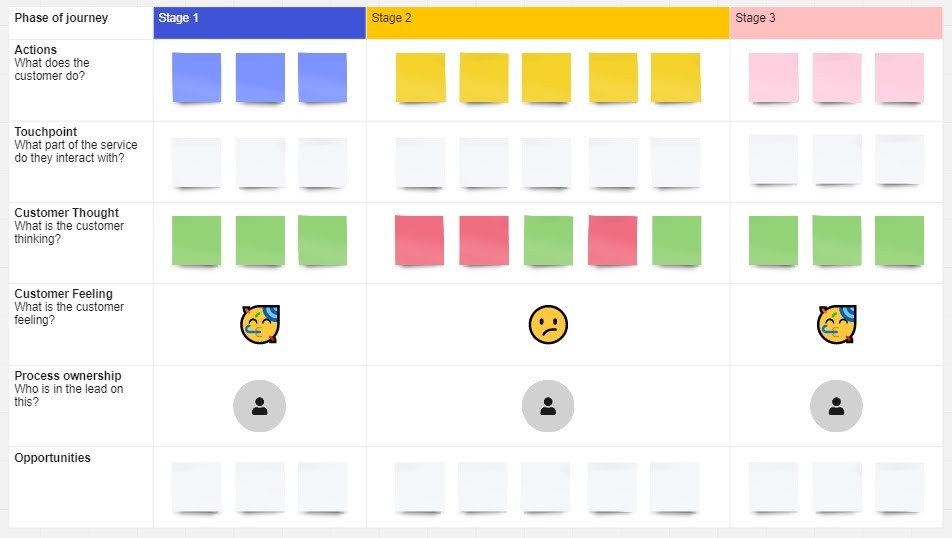

2. Mural
Mural is another easy-to-use tool that provides you with helpful instructions, examples, and templates to inspire and guide you as you create your journey map.
Here’s how one of its templates look like:
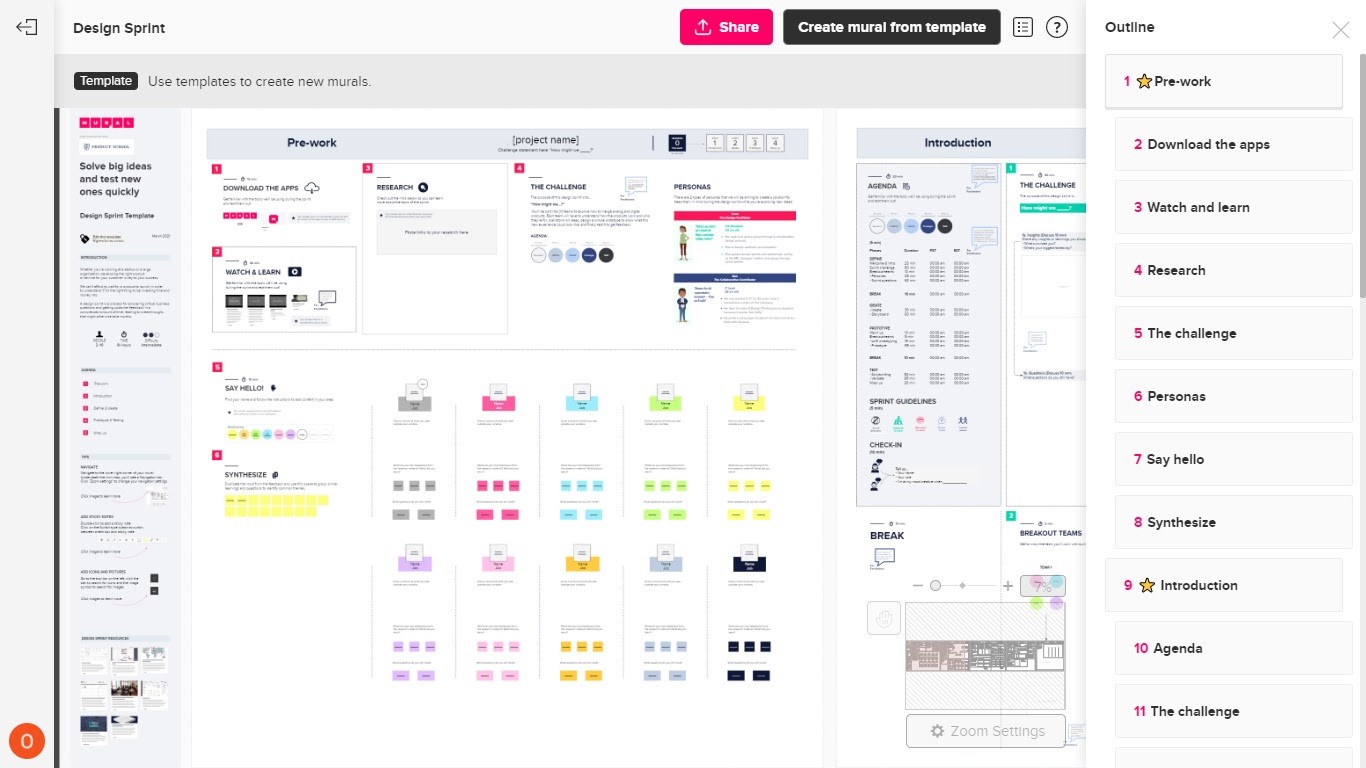

Want a closer look? Here’s the first stage of the template- the prework stage:
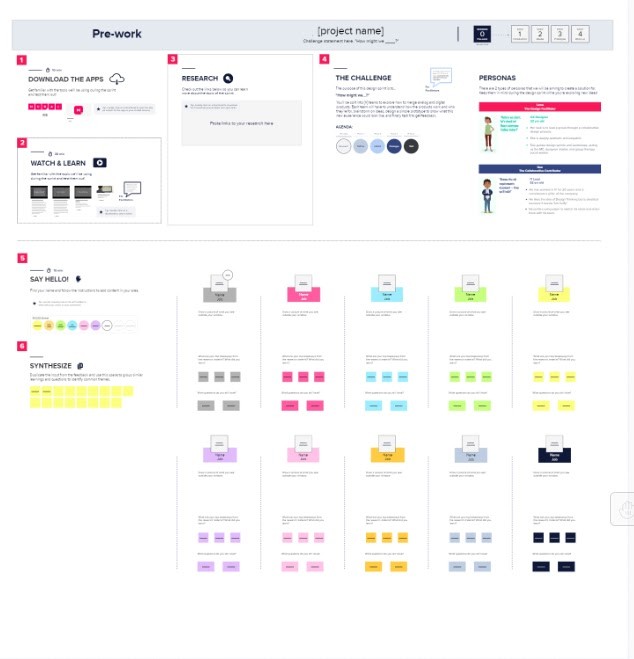

3. Smaply
Smaply is another Customer Journey Mapping tool you can’t go wrong with. It offers four types of templates, namely the:
- Service blueprint map
- Communication journey map
- Empathy journey map
- Comparison journey map
Smaply also provides you with examples and insights on customer needs. Here’s a section of a customer journey map template from them:
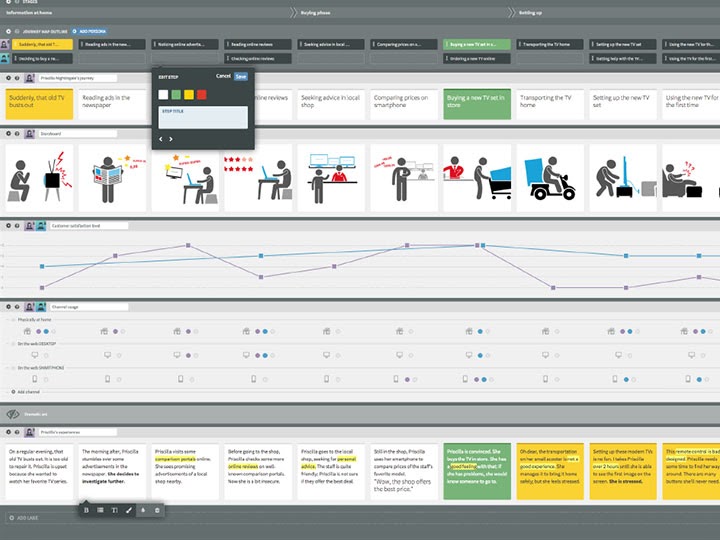

4. Custellence
Custellence is a highly recommended customer journey mapping tool with features more advanced than its predecessors. It provides a variety of templates for you to choose from and work with. Here’s a section of their “Professional Map Template”


Conclusion
A good customer journey map promotes empathy and gives you and your team a clear vision for improving your customers’ experience. Once you get this clear picture, you’ll understand your customers’ emotions, pain points, and your brand’s touchpoints. You can then come up with specific solutions.
After creating your journey map, don’t toss it somewhere and forget all about it. Keep it updated with current changes in your business and corresponding changes in customer behavior.
Now that you have all you need to create your journey map, get to it as soon as you can. Also, don’t forget to put the insights you get to actual use. That’s the whole point, isn’t it? The earlier you do, the quicker you can make your conversion rates soar.

